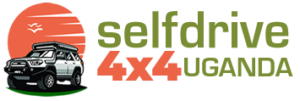So, you’re considering a self-drive safari in Uganda? That’s fantastic! It’s bold, adventurous, and honestly, one of the most liberating ways to explore the Pearl of Africa. However, let’s be honest: driving yourself around a foreign country, especially one with wildlife, can raise a lot of questions. Concerns about road safety, police interactions, and what to do if something goes sideways.
Don’t stress—I’ve got you. Let’s walk through what you need to know before grabbing those keys and hitting the road.
Road Conditions & Vehicle Security: Expect the Unexpected
Uganda’s roads can be unpredictable, much like its wildlife. In and around the cities, you’ll encounter decent tarmac roads, but once you head toward national parks or rural areas, expect a bumpy ride. Potholes, gravel stretches, and muddy roads after rain are all part of the experience.
If you’re not used to off-roading, no worries. Just go slow, avoid night driving (trust me on this one), and make sure your vehicle is up to the task. A 4×4 is pretty much essential, especially during the rainy seasons. Oh, and always double-check that your spare tire isn’t just there for show—you might actually need it.
When it comes to parking, prioritize safety and common sense. Don’t leave valuables in sight, and if your accommodation offers secure parking, take advantage of it. Most lodges and campsites are aware of travelers’ needs and are relatively security-conscious.
Checkpoints & Police Protocol: Nothing to Fear (If You’re Prepared)
You’ll likely encounter several police checkpoints along your route—they’re common and nothing to worry about. Most officers are polite and perform routine checks. They usually ask for your driver’s license (an international one is best), vehicle registration, and sometimes proof of insurance.
Here’s the golden rule: remain calm, respectful, and patient. Don’t argue or offer bribes (seriously, don’t do this), and if there’s a language barrier, a friendly smile can make a big difference.
It also helps to know a few local greetings. A cheerful “How are you?” or “Oli otya?” (in Luganda) can shift the tone of your interaction. Being courteous shows you respect their role, and in most cases, they will let you go on your way.
Insurance & Emergency Contacts: Your Invisible Safety Net
Alright, this topic may not be the most exciting, but it’s critical. Make sure your rental vehicle comes with comprehensive insurance—not just the basic coverage that handles minor damages, but real coverage that includes roadside assistance and third-party liability.
Also, consider getting a local SIM card with data—it’s invaluable for navigation, booking accommodations, or calling for help. Save emergency numbers in your phone, including those for your car rental company, local police, and ambulance services.
Pro tip: Write down those numbers on paper as well. Phones can die, but notebooks won’t.
Final Thoughts: It’s Not Just Doable—It’s Incredible
Driving through Uganda isn’t just feasible; it’s an unforgettable experience. You control your journey, free to stop and marvel at elephants crossing the road or pull over for the best rolex (that’s a rolled-up omelette wrap, not the watch) you’ve ever tasted.
Sure, there will be moments of uncertainty—maybe even a little mud-induced panic—but that’s all part of the adventure. With some preparation and the right mindset, a self-drive safari can be one of the most rewarding ways to experience Uganda’s natural beauty and vibrant wildlife.
Need help choosing the right route or vehicle? Or want to know what it’s really like to navigate Queen Elizabeth National Park alone?





